Bartels Conn Function
Mathematical Definition
\[f(x,y)=|x^2 + y^2 + xy| + |sin(x)| + |cos(y)|\]Plots
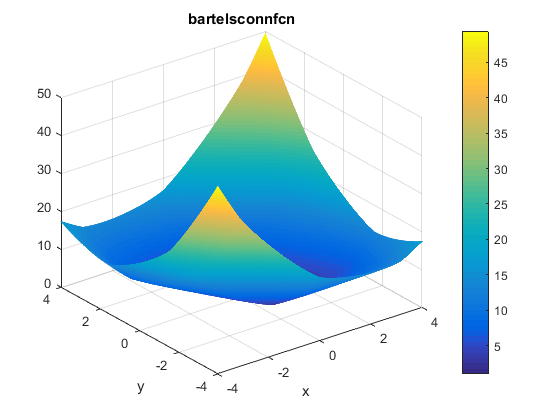
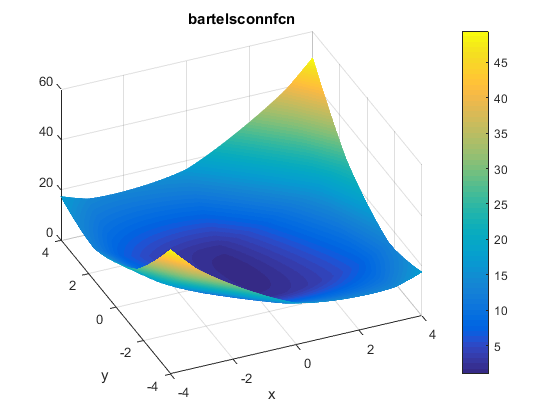
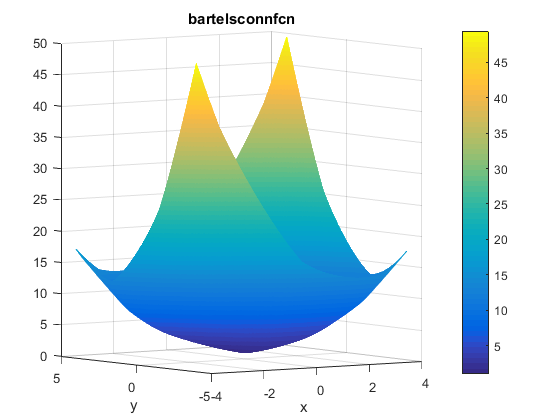
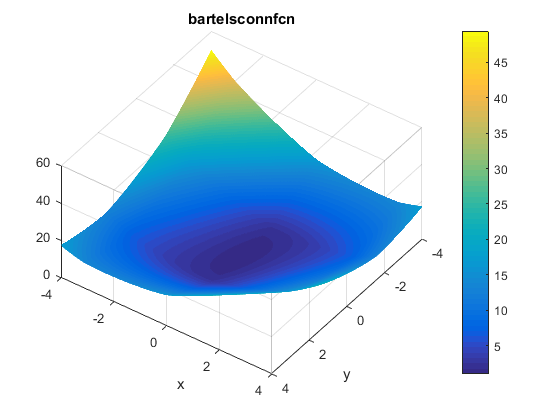
A contour of the function is presented below:
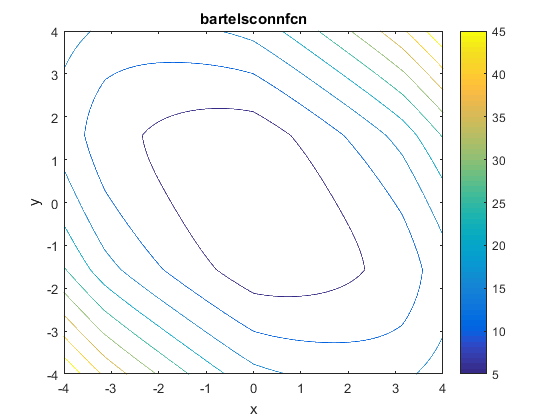
Description and Features
- The function is not convex.
- The function is defined on 2-dimensional space.
- The function is non-separable.
- The function is non-differentiable.
Input Domain
The function can be defined on any input domain but it is usually evaluated on $x \in [-500, 500]$ and $y \in [-500, 500]$.
Global Minima
The global minimum $f(\textbf{x}^{\ast})=1$ is located at $\mathbf{x^\ast}=(0, 0)$.
Implementation
Python
For Python, the function is implemented in the benchmarkfcns package and can be installed from command line with pip install benchmarkfcns.
from benchmarkfcns import bartelsconn
print(bartelsconn([[0, 0],
[1, 1]]))MATLAB
An implementation of the Bartels Conn Function with MATLAB is provided below.
% Computes the value of the Bartels Conn benchmark function.
% SCORES = BARTELSCONNFCN(X) computes the value of the Bartels Conn
% function at point X. BARTELSCONNFCN accepts a matrix of size M-by-2 and
% returns a vetor SCORES of size M-by-1 in which each row contains the
% function value for the corresponding row of X.
%
% Author: Mazhar Ansari Ardeh
% Please forward any comments or bug reports to mazhar.ansari.ardeh at
% Google's e-mail service or feel free to kindly modify the repository.
function scores = bartelsconnfcn(x)
n = size(x, 2);
assert(n == 2, 'Bartels Conn function is only defined on a 2D space.')
X = x(:, 1);
Y = x(:, 2);
scores = abs((X .^ 2) + (Y .^ 2) + (X .* Y)) + abs(sin(X)) + abs(cos(Y));
endThe function can be represented in Latex as follows:
f(x,y)=|x^2 + y^2 + xy| + |sin(x)| + |cos(y)|References:
- Momin Jamil and Xin-She Yang, A literature survey of benchmark functions for global optimization problems, Int. Journal of Mathematical Modelling and Numerical Optimisation}, Vol. 4, No. 2, pp. 150–194 (2013), arXiv:1308.4008